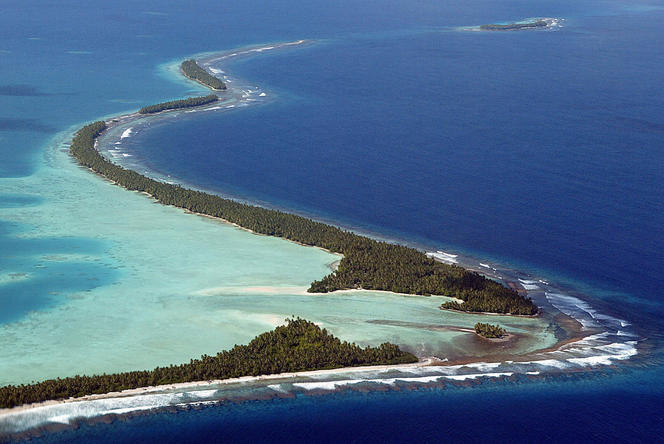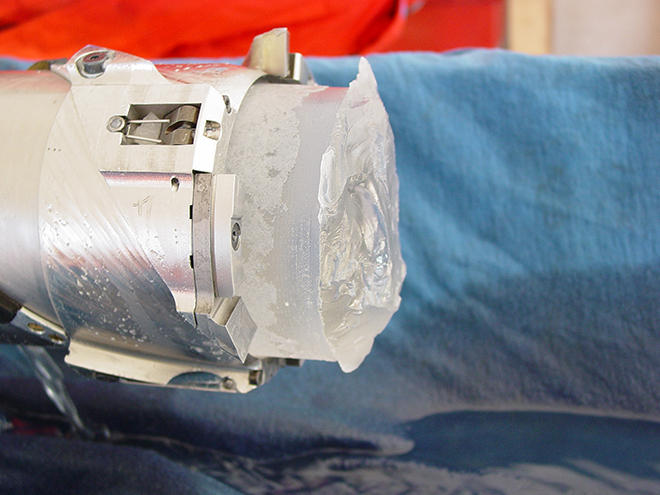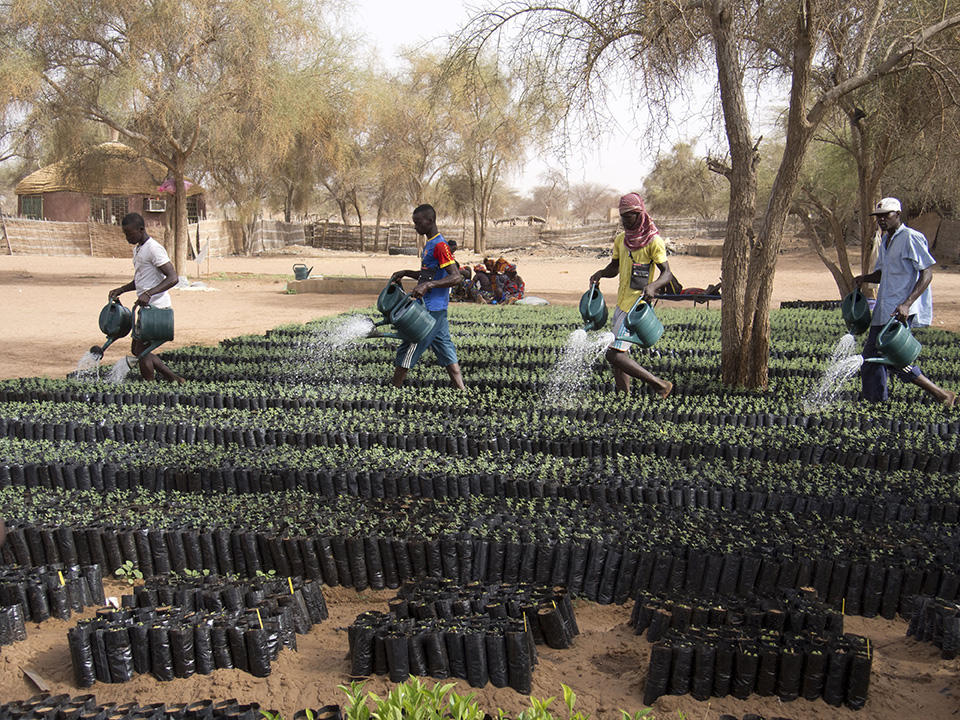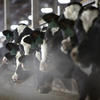You are here
COP21: Action Required

As France hosts the 21st Conference of the Parties to the United Nations Framework Convention on Climate Change, otherwise known as COP21, the world will come together in Paris between November 30 and December 11, 2015, in a bid to decide on the future of the planet. To succeed, the Conference must achieve an unprecedented goal: to finalize the first legally binding and universal agreement on climate change, applicable to the 195 member states of the UN Framework Convention on Climate Change (UNFCCC) as of 2020. France’s Minister of Foreign Affairs and International Development Laurent Fabius, who will chair the Conference, sums up the challenge: “We have a historic responsibility since we are the first generation to become aware of the problem, and the last that can act on it.” For this is a matter of the utmost urgency. Since the industrial revolution, the Earth’s average temperature has increased by nearly 1°C. If nothing is done, our planet’s climate could totally spin out of control by the end of the century, bringing with it dramatic environmental, economic, and social consequences. Within this context, the Conference has a dual objective of keeping global warming below 2°C, and helping humankind adapt to a climate that, in any event, will no longer be the one we have known until now. To achieve this target, researchers are present on all fronts. The scientific community was the first to sound the alarm, and is now all hands on deck to find solutions.
and the last that can act on it.
The Earth’s climate does of course undergo periodic changes. For instance, regular variations in the way Earth spins on its axis and orbits around the Sun provide an explanation for the cycles of glacial and interglacial periods. But while these natural changes occur over timescales ranging from 1000 to 10,000 years, the global warming we are now witnessing is happening at unprecedented speed. Our planet’s mean temperature increased by 0.85°C from 1880 to 2012, with most of the rise taking place since 1950. The year 2014 was the warmest since 1880, and 2015 may well break a new record. With the exception of 1998, the ten warmest years in the past 130 occurred after 2000. While 0.85°C does not seem much, “the difference between a glacial and an interglacial period does not exceed a few degrees. So we are definitely undergoing significant climate change at an unparalleled rate,” points out Pascale Delecluse, director of the CNRS National Institute for Earth Sciences and Astronomy (INSU).
So what is the cause for this global increase in our planet’s temperature? “It is highly likely that human activity is the main factor of global warming,” says Sylvie Joussaume of the LSCE.1 Since the industrial revolution, human activity—including the burning of gas and oil, deforestation, and intensive agriculture—has led to ever-greater amounts of greenhouse gases, mainly carbon dioxide and methane, being released into the atmosphere. The problem is that the Earth’s surface, warmed by the sunlight it receives, emits infrared radiation that is then partially absorbed by greenhouse gases. These gases in turn re-emit infrared radiation towards the surface, warming it further. This is what is known as the greenhouse effect. The atmospheric concentration of CO2, which was 270 parts per million towards the end of the nineteenth century, now stands at 400 parts per million. This is the highest concentration in the past 800,000 years, as shown by CNRS researchers in 2008 when they analyzed gases trapped in the Antarctic ice, as part of the EPICA2 ice coring project.
The effects of global warming are already being felt. As a result of melting glaciers and ice sheets, coupled with thermal expansion of the oceans, sea levels are now rising by 3.3 mm each year, as compared with 1-2 mm over the past few millennia. In addition, 30% of arctic sea ice has melted since 1980. Heat waves are becoming more frequent: extreme temperatures that only affected 1% of the Earth’s land surface now impact nearly 10%. And the oceans are acidifying faster than at any time in the past 300 million years due to excess CO2 dissolving in surface waters, with little known but worrying effects on marine organisms.
If emissions continue at their current rate, temperatures are likely to rise by 2.6-4.8°C (with a mean value of 3.7°C) compared with the period 1986-2005, and by 0.3–3.1°C with alternative scenarios. These figures are based on predictions by 27 global numerical models of the Earth system, two of which involve the CNRS, at the Institut Pierre-Simon Laplace (IPSL)3 and at the CNRM4–CERFACS.5 In addition, according to the last IPCC6 synthesis report, the worst-case scenario predicts sea levels to rise by nearly one meter by the end of the century.
National efforts for joint solutions
To bring humankind back on track and curb the effects of climate change, the 195 UNFCCC Parties have developed a novel approach: before the Conference, each country must submit an Intended Nationally Determined Contribution (INDC) in which it publicly states the action it intends to take to contribute to the global effort. A synthesis report on INDCs will have been presented by November 1. By September 8, 2015, 58 countries responsible for 60% of greenhouse emissions in 2012 had submitted their contributions. For example, the EU member states have set a target of a 40% emissions reduction by 2030, from 1990 levels. This sets them on track to achieve an 80–95% cut by 2050. “On that basis, the best we can hope for is a treaty laying down fundamental principles and a global target, as well as a document taking up the contributions from the Parties,” says Sandrine Maljean-Dubois, of the CERIC7 “Ideally, this would be a flexible, incentive agreement allowing contributions to be revised upwards over time.”

Fundamentally, what is the 2°C figure based on? “It is a necessary political symbol,” admits Hervé Le Treut, director of the IPSL. But there is more to it: “It is also the limit beyond which the Earth will actually become a different planet, whose dangers are difficult to assess at this stage.” The more temperatures rise, the more the physical processes involved in the climate system might exceed thresholds beyond which the whole mechanism could spin out of control—inhibiting deep ocean ventilation, destabilizing the Arctic polar ice cap, preventing the oceans from absorbing more carbon as they become warmer, for example, with equally uncontrollable and irreversible consequences on the environment. “These thresholds will not necessarily be exceeded if average temperatures rise by more than 2°C,” Delecluse points out. “But beyond this limit, the climate will be set on an irreversible path.” Jean-Louis Dufresne of the LMD8 adds: “The higher the warming, the more uncertain the climate and the lesser our ability to predict, and therefore anticipate, such upheavals.” In other words, the climate will spiral out of control.
Staying below target
In any event, keeping the increase below 2°C is an ambitious goal in light of the situation. To give just one figure, human-induced carbon dioxide emissions must not exceed a total of 3 trillion tons to meet the target. Yet 2 trillion tons have already been released since the industrial revolution. “We don’t have much leeway,” Joussaume emphasizes. “By 2050, we will have to reduce our global emissions by 40-70% compared with 2010 to stay below 2°C—and achieve carbon neutrality by the end of the century.” For Philippe Ciais of the LSCE, “taking into account the uncertainties in models of climate sensitivity to greenhouse gases, and the ability of the land and oceans to reabsorb some of the emitted carbon, this target—which means reducing our emissions by 3-6% annually throughout the century—gives a probability of more than 70% of staying below a 2°C rise.” This is possible, even though the amount of carbon released by human activity now reaches 40 billion tons each year, compared with 1-2 billion in 1950, as Le Treut points out.
Theoretically, this target, which constitutes the mitigation component of the future Paris agreement, can be met. As shown in the latest IPCC report, climate stabilization is achieved in 60% of the economic scenarios studied. However, this is only possible if drastic action is taken immediately, with the 2°C threshold being temporarily exceeded at times. It also implies a macroeconomic cost of 4% of GDP over the century, equivalent to a year of delayed growth. Yet as Franck Lecocq, director of the CIRED,9 points out, “these projections are based on strong assumptions, including large-scale CO2 capture by mid-century, and massive reforestation.” However, carbon capture is still in its infancy, despite the research carried out notably by the CNRS into carbon storage materials. As for reforestation, it raises the issue of land use, which remains little known.10

Besides, this target already means that humanity will have to live in a very different world. As the latest IPCC report shows, global warming is impacting, and will cause increasing damage to every environment on every continent, from the polar regions to coral reefs and from forests to coastlines. The hardest-hit regions include the Arctic, since warming is greater at high latitudes; Africa, faced with multiple challenges; small islands, whose coastlines and fresh water resources are vulnerable; and the great Asian deltas, which are particularly exposed to an increased risk of flooding. This will affect key sectors of the economy (access to water, energy supply, agricultural yields, population movements, etc.) as well as health, security, and poverty.
An interdisciplinary challenge
To be met, these many challenges require the mobilization of every scientific discipline. “This is essential if we are to make the transition from a science that identifies problems to one that offers solutions,” says Sébastien Treyer of the IDDRI.11 The success of the conference “Our Common Future under Climate Change” illustrates this commitment. The CNRS and its partners played an active role in this international forum, which was held at UNESCO on July 7-10, 2015, at the initiative of the French scientific community. Inaugurated by French Minister of Ecology Ségolène Royal as a prelude to the COP21 Conference, the event brought together 2200 researchers and highlighted the wide spectrum of disciplines now addressing climate concerns. “It enabled us to clearly spell out to decision-makers not only the scope of the challenges we are faced with, but also the involvement of the entire scientific community in finding solutions to reduce global warming and adapt to its effects,” Treyer says.
Above all, it is essential to be able to fully grasp the situation in which humankind finds itself. “This is a turning point: humans are now clearly part of the causal chain that alters nature, and climate change presents us with a challenge so huge that at first, we feel that there’s nothing we can do about it,” explains Sandra Laugier, a philosopher and deputy scientific director at the CNRS Institute for Humanities and Social Sciences (INSHS). “Moreover, it is now obvious that progress can no longer consist in finding radical solutions, but rather in coping with change. From this point of view, philosophy can help reduce this global situation to individual ones that can be understood and therefore possibly dealt with.” The social sciences can also contribute to investigating the complexity of these new parameters: “We act as if humanity was facing a common future but our interests widely differ, especially due to the significant environmental, economic, and social inequalities between countries. To a certain extent, social sciences help us remain realistic, even though it is easier to think about the end of the world or a global disaster in a hundred or in a thousand years’ time than tackle immediate problems in all their diversity,” Laugier adds.
At the other end of the disciplinary spectrum, climatologists must be able to refine their predictions so that they can look into countries’ proposals over time, and ensure that these are compatible with the desired mitigation or adaptation pathways. There are a number of areas where this needs to be done. For instance, data remains insufficient, especially about the Arctic and tropical regions. In addition, “it will take a lot of effort to format all the global data and make it compatible,” says Ciais. Modeling of processes also needs to be further refined. Take ice sheet dynamics for example. “Twenty years ago it was thought that they would take 100,000 years to melt and affect the climate. However, satellite and field observations have shown that they are breaking up far more quickly, hence the importance of understanding and depicting these processes so that they can be better implemented in numerical models,” Delecluse explains. The same goes for the carbon cycle: “At present, half of the emissions are absorbed by the land, vegetation, and oceans. We know that this proportion will decrease due to rising temperatures, but cannot tell to what extent as yet.” Finally, climatologists are seeking to improve and validate numerical weather prediction models. With more reliable forecasts and better spatial resolution, these models will be able to produce accurate data for each country, as well as provide detailed information over time about the occurrence of extreme weather events—such as tropical cyclones—at the local level.
In fact, a refined analysis of the effects of climate change is an utmost priority if humanity is to get on the road to sustainable adaptation. For example, because of the impact of rising sea levels, small island states are generally looked on as the first victims of global warming, which will affect them in the very short term. Yet a synthesis of observations of hundreds of coral islands shows that, over the past 30-100 years, three-quarters of them have maintained their area or even seen it increase. “At this point, the main factor of change is the ability of coral reefs to supply these islands with sediments, rather than sea level rise,” explains Virginie Duvat, of the LIENSs.12 Not that this result means that no action should be taken, on the contrary. But it does show that sustainable adaptation to rising sea levels on any of the world’s coasts should under no circumstances lead to the construction of sea defences such as dykes and seawalls, which actually prevent sediment supply. More generally, “this argues in favor of robust, flexible adaptation processes that will need to be spread out over long periods of time, responding to changing impacts,” Duvat adds. Treyer agrees: “Science has definitely entered the era of detailed analysis.”

Means and resources
To implement these methods, scientists will need versatile resources—economic and financial to start with. At present, the Paris agreement is supposed to determine how adaptation to climate change will be funded. In 2009, developed countries committed themselves to mobilizing US$100 billion from public and private funding each year until 2020, to enable developing countries to combat global warming and embark on sustainable development. However, as Lecocq points out, “much more will be needed, and in a tight budgetary situation.” This is why economists are striving to propose innovative funding mechanisms that will encourage investment in low carbon projects. Lecocq also mentions an innovative concept called a co-benefit: “for example, air pollution produced by burning coal and gas generates significant costs in terms of health and agricultural productivity, especially in India and China. The latest IPCC report shows that reducing greenhouse gas emissions would provide a ‘co-benefit’ of around 0.6% of GDP.” As a result, cutting emissions would not only benefit the climate but also the country’s economy. Public policies also have a key role to play in adaptation, as they determine the creation of large infrastructures and influence individual behavior. Antoine Bozio, director of the Institute of Public Policies (IPP), calls for a change in the role of taxation. “Because of the need to fight global warming, part of taxation should no longer be considered as a source of income but rather as a means of keeping the balance between ‘winners’ and ‘losers.’” This is the condition for a change in human behavior, he says.
And it is this behavior that needs to change. “While still important, it doesn’t just boil down to turning the tap off while you clean your teeth,” says Le Treut. “It is a question for sociologists,” Treyer explains. “What is it in a society that brings about a change in behavior, such as the one we witnessed when smoking was banned in public places?” According to Laugier, “it is also an issue for historians, who can identify tipping points similar to the one we are confronted with.”
At the other end of the chain, the scientific community is endeavoring to open up new prospects in terms of multilateral negotiations and international governance. Maljean-Dubois points out that decision-makers now have a wide range of legal instruments at their disposal if they wish to go further. “In addition to a universal agreement, there could be enhanced cooperation between groups of countries, or else sectoral agreements.” This specialist in international and European environmental law also points to the shortcomings of global governance. “In areas such as biodiversity, the economy and social affairs, global governance is highly fragmented. For instance, it does not help that the Montreal Protocol13 on ozone is separated from climate agreements, or that the latter have no connection with the World Trade Organization, which has control over intellectual property issues related to clean technology. Academic research is increasingly focusing on such obstacles and ways of getting round them.”
With many observers highlighting the inadequacies of a large number of countries’ INDCs, will the planet really be ready when the Paris negotiations begin next month? “We’ve studied the proposals that are already available,” says Ciais. “As things stand, the chances of meeting the 2°C target are slim but not nil.” For Le Treut, “in many countries, these proposals have given rise to a heated debate. It is not easy for a country to make a 15-year commitment, and the effort that it implies should be emphasized. Whatever the objectives listed in the future agreement, it should be assessed on its ability to create a dynamic.” In any case, one thing is certain: scientists are in the starting blocks for the November event.
Click here to learn more about CNRS involvement in COP21.
COP21 Official website: www.cop21.gouv.fr/en
- 1. Laboratoire des sciences du climat et de l’environnement (CNRS / CEA / UVSQ).
- 2. European Project for Ice Coring in Antarctica.
- 3. CNRS / UPMC / UVSQ / CNES / CEA / IRD / ENS / Ecole polytechnique / Université Paris VII Diderot / Université Paris Est Créteil.
- 4. Centre national de recherches météorologiques (CNRS / Météo France).
- 5. Centre européen de recherche et de formation avancée en calcul scientifique (CNRS / CERFACS).
- 6. Established by the United Nations Environment Programme (UNEP) and the World Meteorological Organization (WMO), the Intergovernmental Panel on Climate Change is the leading international body for the assessment of climate change.
- 7. Centre d’études et de recherches internationales et communautaires (CNRS / Aix-Marseille Université).
- 8. Laboratoire de météorologie dynamique (CNRS / ENS / Ecole polytechnique / UPMC).
- 9. Centre international de recherche sur l’environnement et le développement (CNRS / Ecole des Ponts Paris Tech / Agro Paris Tech / CIRAD / EHESS).
- 10. The “Changement d’affectation des sols” (GIS CAS) research program was lanched in 2004 (ministères de l’Agriculture et de l’Ecologie / ADEME / Inra / FranceAgriMer).
- 11. Institut du développement durable et des relations internationales.
- 12. LIttoral ENvironnement et Sociétés (CNRS / Université de la Rochelle / Ministère de l’enseignement supérieur et de la recherche / Fédération de recherche en environnement pour le développement durable).
- 13. Adopted on March 22, 1985, the Montreal Protocol bans the use of chlorofluorocarbons (CFCs) and other substances that deplete the ozone layer. It has now been signed by 197 countries, making it the first ever environmental protocol to achieve universal ratification.
Explore more
Author
Born in 1974, Mathieu Grousson is a scientific journalist based in France. He graduated the journalism school ESJ Lille and holds a PhD in physics.
























